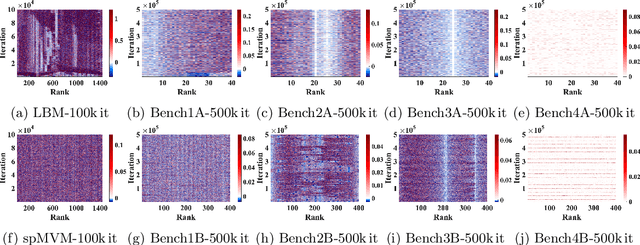Ayesha Afzal
Exploring Techniques for the Analysis of Spontaneous Asynchronicity in MPI-Parallel Applications
May 27, 2022



Abstract:This paper studies the utility of using data analytics and machine learning techniques for identifying, classifying, and characterizing the dynamics of large-scale parallel (MPI) programs. To this end, we run microbenchmarks and realistic proxy applications with the regular compute-communicate structure on two different supercomputing platforms and choose the per-process performance and MPI time per time step as relevant observables. Using principal component analysis, clustering techniques, correlation functions, and a new "phase space plot," we show how desynchronization patterns (or lack thereof) can be readily identified from a data set that is much smaller than a full MPI trace. Our methods also lead the way towards a more general classification of parallel program dynamics.
 Add to Chrome
Add to Chrome Add to Firefox
Add to Firefox Add to Edge
Add to Edge